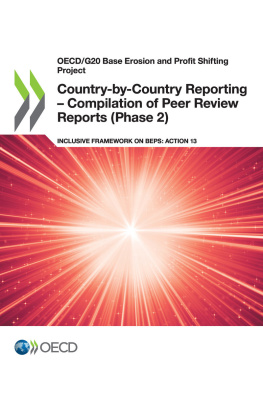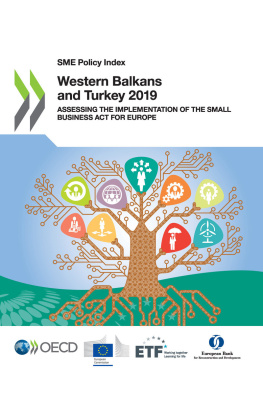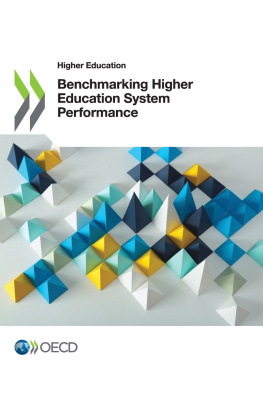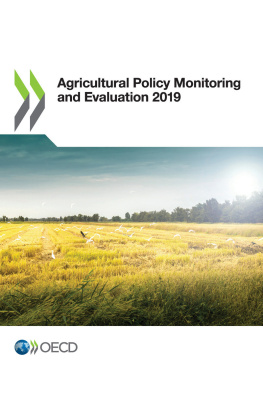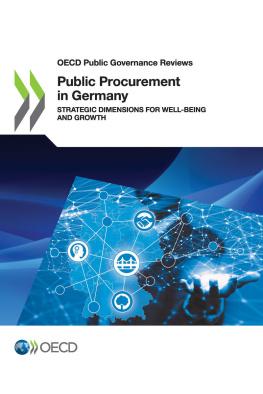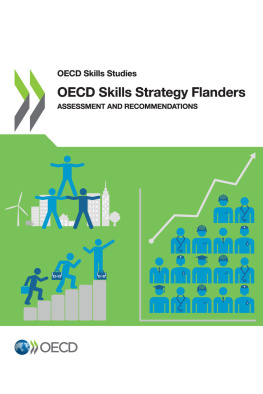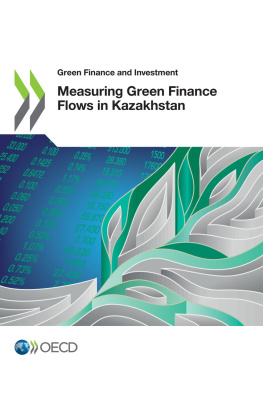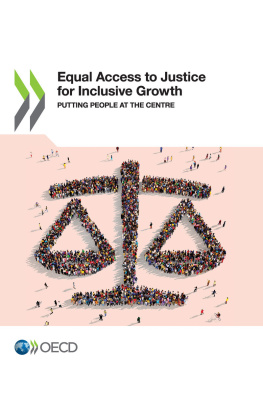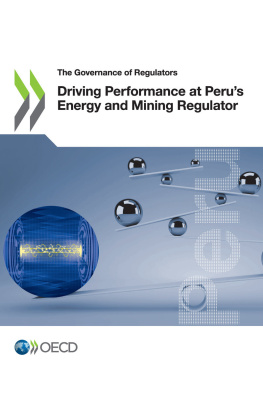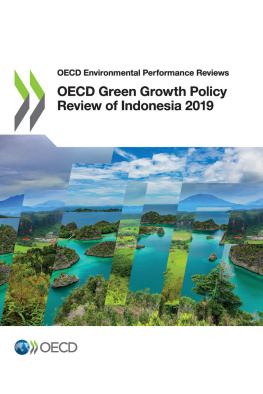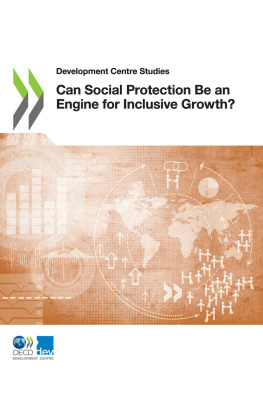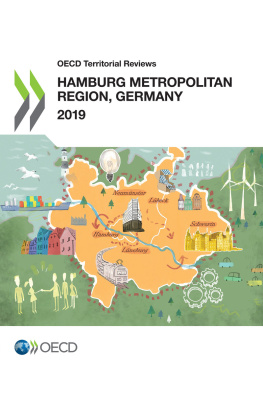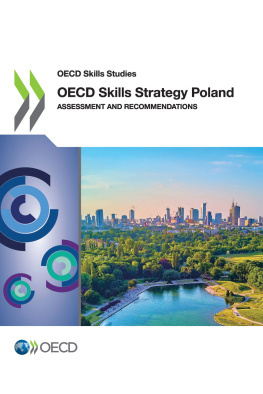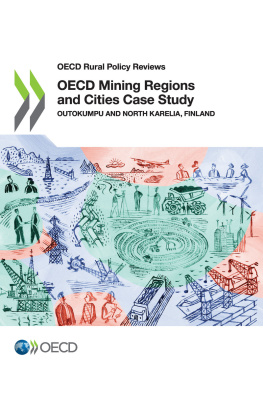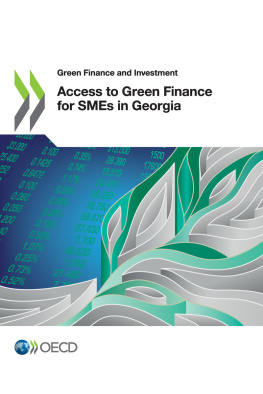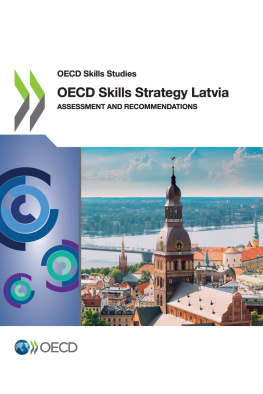OECD - Mining and Green Growth in the EECCA Region
Here you can read online OECD - Mining and Green Growth in the EECCA Region full text of the book (entire story) in english for free. Download pdf and epub, get meaning, cover and reviews about this ebook. year: 2019, publisher: OECD Publishing, genre: Politics. Description of the work, (preface) as well as reviews are available. Best literature library LitArk.com created for fans of good reading and offers a wide selection of genres:
Romance novel
Science fiction
Adventure
Detective
Science
History
Home and family
Prose
Art
Politics
Computer
Non-fiction
Religion
Business
Children
Humor
Choose a favorite category and find really read worthwhile books. Enjoy immersion in the world of imagination, feel the emotions of the characters or learn something new for yourself, make an fascinating discovery.
Mining and Green Growth in the EECCA Region: summary, description and annotation
We offer to read an annotation, description, summary or preface (depends on what the author of the book "Mining and Green Growth in the EECCA Region" wrote himself). If you haven't found the necessary information about the book — write in the comments, we will try to find it.
OECD: author's other books
Who wrote Mining and Green Growth in the EECCA Region? Find out the surname, the name of the author of the book and a list of all author's works by series.
Mining and Green Growth in the EECCA Region — read online for free the complete book (whole text) full work
Below is the text of the book, divided by pages. System saving the place of the last page read, allows you to conveniently read the book "Mining and Green Growth in the EECCA Region" online for free, without having to search again every time where you left off. Put a bookmark, and you can go to the page where you finished reading at any time.
Font size:
Interval:
Bookmark:

OECD (2019), Mining and Green Growth in the EECCA Region , OECD Green Growth Studies, OECD Publishing, Paris, https://doi.org/10.1787/1926a45a-en .
For most countries in the Eastern Europe, Caucasus and Central Asia (EECCA) region, mining is an important economic sector that contributes to employment and public revenue. It is also a major historic source of environmental damage, and continues to have the potential for immediate and long-term negative environmental effects. Governments in the region have a vital role to support better environmental performance in the mining sector and ensuring the industry can be a progressive part of a greener economy.
This report provides a foundation upon which to develop country-specific strategies for reconciling green growth and the mining sector. To that end, the report examines the environmental impacts of the mining sector in the EECCA. It assesses what has worked and not worked in OECD member countries to improve environmental performance. And it studies specific examples of successful sustainable mining operations.
Furthermore, it reviews environmental impacts and trends in the mining sector. It complements international knowledge and efforts in providing new evidence and best practices from leading mining jurisdictions. In so doing, it provides policy makers with guidance to reconcile environmental and competitiveness objectives in the mining sector.
This report would not have been possible without the generous support of the governments of Norway and Switzerland, and both the author and the OECD express their gratitude. The author is also grateful for the invaluable comments he received from his colleagues at the OECD, including Krzysztof Michalak, Jean-Franois Lengell, Nelly Petkova, Taka Kato, Enrico Botta, and Chris McDonald, as well as from Claudia Kamke at UNECE.
This report:
reviews principal examples of the environmental damage caused by different forms of mining
presents emerging technology trends that are either directly or indirectly impacting environmental performance in mining
identifies linkage opportunities between the mining sector and the green economy
recommends areas of policy response for governments to improve environmental performance in the mining sector.
The shift to a greener global economy will continue to demand significant quantities of natural resources, including copper, lithium and cobalt. However, the mining sector is a major potential source of immediate and long-term environmental damage. In the Eastern Europe, Caucasus and Central Asia (EECCA) region, the extraction of mineral resources remains an important contributor to export earnings, employment and public revenue at the national and sub-national level. Governments have a vital role to play in supporting better environmental performance in the mining sector. They can ensure that industry is a progressive partner in promoting green economic growth and achieving the Sustainable Development Goals.
Beyond reducing the impact of mining on the environment and local communities, sustainability is increasingly an asset for competitiveness. Good environmental performance lowers costs by improving efficiency and helping ensure that mining companies earn a social licence from stakeholders.
The mining sector has substantial backward and forward linkages to other parts of the economy. Shifting mining to a more sustainable path can potentially improve environmental performance in existing linkages, as well as develop new ones. This includes acting as a conduit for new technologies, such as automation and digitalisation. It also means becoming a driver for environmental service providers, renewable energy and green infrastructure.
Surface and underground mining the most common mining techniques often generate significant adverse environmental impacts. Such impacts can go beyond the immediate operational area to cross watersheds and borders. At the same time, surface and underground mining can contribute to climate change. Environmental impacts in the immediate area can include ecosystem destruction; negative effects on biodiversity; release of heavy metals, toxic substances and particulate matter through both mining and the beneficiation processes; and significant use of water resources.
OECD mining jurisdictions generally have legal requirements for site rehabilitation. However, waste rock and tailings management facilities (TMFs) can remain potentially dangerous sites of environmental contamination for decades and even centuries after mining ceases. Because closed mines are monitored less than operational ones, environmental impacts can be particularly damaging. These impacts can range from acute damage caused by an accident at a TMF to longer-term effects.
These issues are particularly pertinent in the EECCA region. The legacy of Soviet-era mining has left significant numbers of poorly maintained non-operational mine sites and legacy pollution, without clear paths for rehabilitation.
Automation and remote control in mining is largely driven by productivity and safety concerns. However, it has additional positive environmental effects. For instance, automated mining trucks can reduce emissions, use inputs more efficiently and prolong machine life.
Electrification, including electric vehicles and renewable energy deployment, has potential benefits for input efficiency, reliability and emission reduction. For off-grid mines, integrating renewables can reduce emissions and costs, while improving reliability. For underground mines, electrification means more safety and efficiency.
Font size:
Interval:
Bookmark:
Similar books «Mining and Green Growth in the EECCA Region»
Look at similar books to Mining and Green Growth in the EECCA Region. We have selected literature similar in name and meaning in the hope of providing readers with more options to find new, interesting, not yet read works.
Discussion, reviews of the book Mining and Green Growth in the EECCA Region and just readers' own opinions. Leave your comments, write what you think about the work, its meaning or the main characters. Specify what exactly you liked and what you didn't like, and why you think so.


